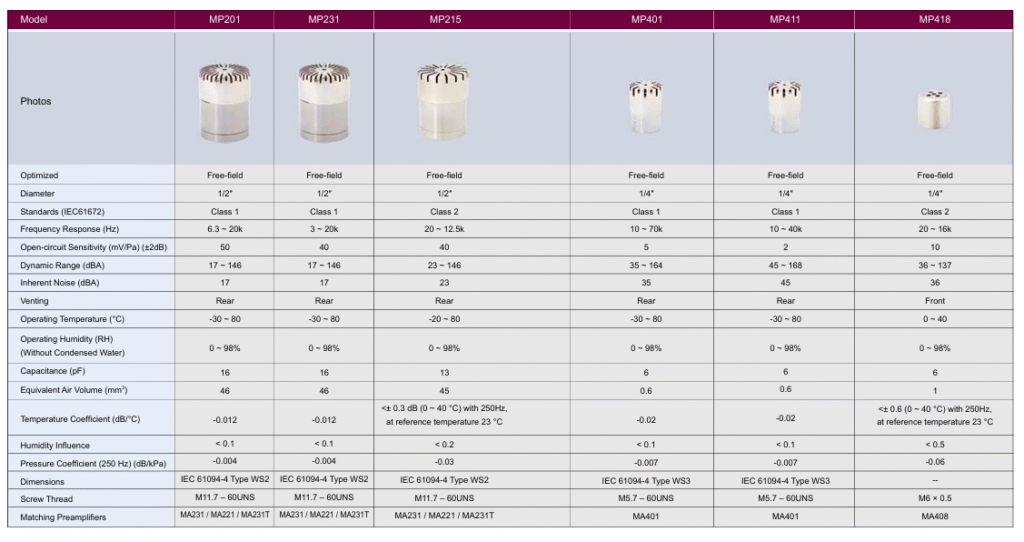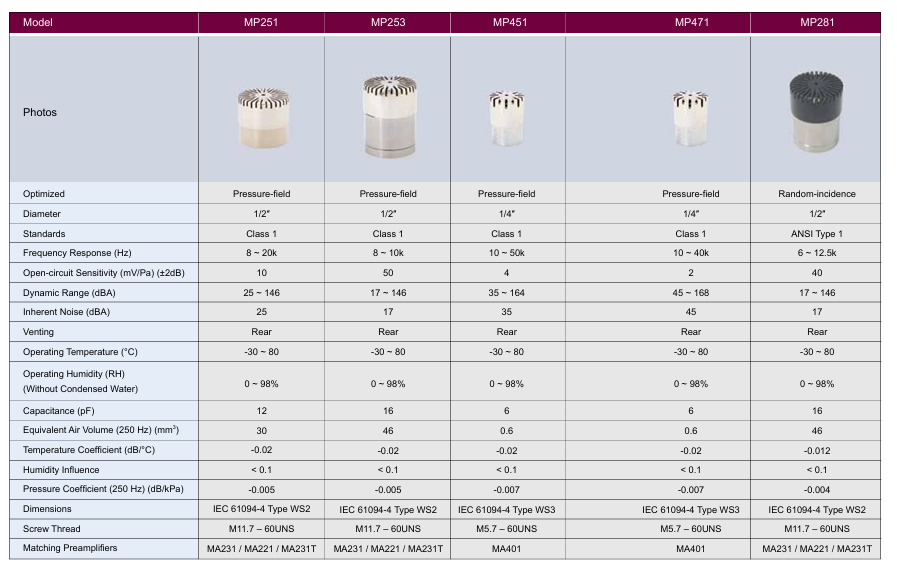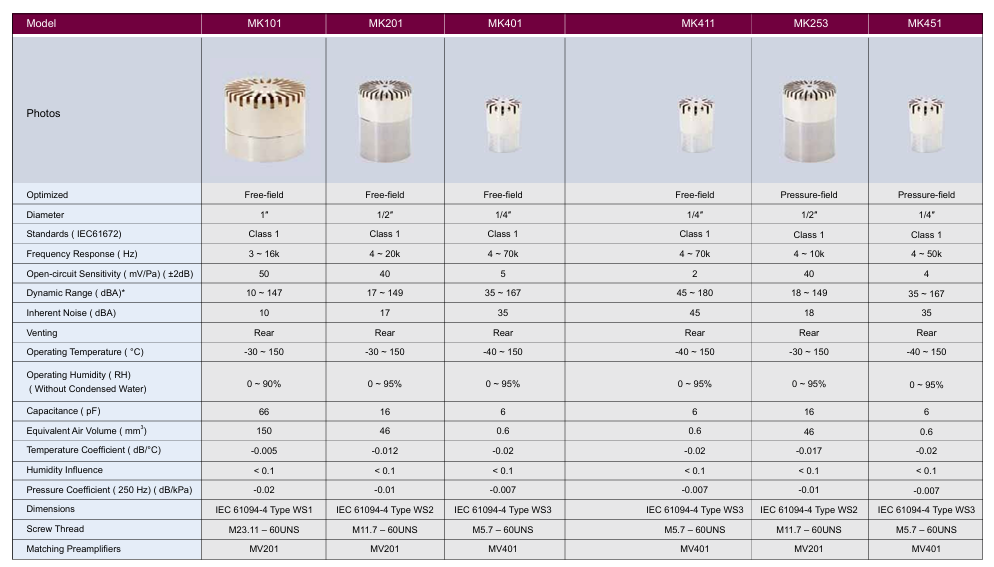A microphone is an acoustic-to-electric transducer or sensor that converts sound into an electrical signal. Most microphones use the change of capacitance caused by the diagram mechanical vibration to produce an electrical voltage signal. In a condenser microphone, the diagram acts as one plate of a capacitor, and the vibrations produce changes in the distance between the plates. There are two type of microphones of this kind: Pre-polarized Microphones and 200V Polarized Microphone
Pre-polarized Microphones
A nearly constant charge is maintained on the capacitor. As the capacitance changes, the charge across the capacitor does change very slightly, but at audible frequencies it is sensibly constant. Pre-polarized Microphones do not need a bias-voltage supply
200V Polarized Microphones
There is no charge maintained on the capacitor, while there would be 200V bias-voltage between the plates. It wolud be necessary to have a 200V bias-voltage supply for the microphone. This type of microphone cannot tolerant high humidity. It is expected to be stored in the package to prevent humidity. But this type of microphone is much more stable and its operating temperature could reach up to 150 °C
Free-field, Pressure or Random-incidence
Measurement microphones can be divided into three groups: Free-field, Pressure, and Random-incidence. The differences between microphones from group to group are at the higher frequencies, where the size of a microphone becomes comparable with the wavelengths of the sound being measured
Free-field microphone
A free-field microphone is designed essentially to measure the sound pressure as it existed before the microphone was introduced into the sound field. At higher frequencies the presence of the microphone itself in the sound field will disturb the sound pressure locally. The frequency response of a free-field microphone has been carefully adjusted to compensate for the disturbances to the local sound field. (see also random-incidence microphones)
Pressure microphones
A pressure microphone is for measuring the actual sound pressure, as it exists on the surface of the microphone’s diaphragm. A typical application is in the measurement of sound pressure in a closed coupler or, as shown below, the measurement of sound pressure at a boundary or wall; in which case the microphone forms part of the wall and measure the sound pressure on the wall it
self.
Random-incidence microphones
A random-incidence microphone is for measuring in sound fields, where the sound comes from many
different directions e.g. when measuring in a reverberation chamber or in other highly reflecting
The combined influence of sound waves coming from all directions depends on how these sound waves are distributed over the various directions. For measurement microphones, a standard distribution has been defined based on statistical consideration; resulting in a standardised random-incidence microphone.




